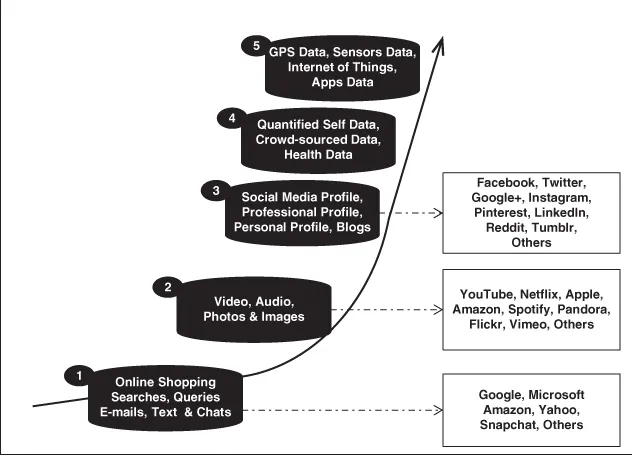
Unstructured Data Analytics
How to Improve Customer Acquisition, Customer Retention, and Fraud Detection and Prevention
- English
- ePUB (mobile friendly)
- Available on iOS & Android
Unstructured Data Analytics
How to Improve Customer Acquisition, Customer Retention, and Fraud Detection and Prevention
About this book
Turn unstructured data into valuable business insight
Unstructured Data Analytics provides an accessible, non-technical introduction to the analysis of unstructured data. Written by global experts in the analytics space, this book presents unstructured data analysis (UDA) concepts in a practical way, highlighting the broad scope of applications across industries, companies, and business functions. The discussion covers key aspects of UDA implementation, beginning with an explanation of the data and the information it provides, then moving into a holistic framework for implementation. Case studies show how real-world companies are leveraging UDA in security and customer management, and provide clear examples of both traditional business applications and newer, more innovative practices.
Roughly 80 percent of today's data is unstructured in the form of emails, chats, social media, audio, and video. These data assets contain a wealth of valuable information that can be used to great advantage, but accessing that data in a meaningful way remains a challenge for many companies. This book provides the baseline knowledge and the practical understanding companies need to put this data to work.
Supported by research with several industry leaders and packed with frontline stories from leading organizations such as Google, Amazon, Spotify, LinkedIn, Pfizer Manulife, AXA, Monster Worldwide, Under Armour, the Houston Rockets, DELL, IBM, and SAS Institute, this book provide a framework for building and implementing a successful UDA center of excellence.
You will learn:
- How to increase Customer Acquisition and Customer Retention with UDA
- The Power of UDA for Fraud Detection and Prevention
- The Power of UDA in Human Capital Management & Human Resource
- The Power of UDA in Health Care and Medical Research
- The Power of UDA in National Security
- The Power of UDA in Legal Services
- The Power of UDA for product development
- The Power of UDA in Sports
- The future of UDA
From small businesses to large multinational organizations, unstructured data provides the opportunity to gain consumer information straight from the source. Data is only as valuable as it is useful, and a robust, effective UDA strategy is the first step toward gaining the full advantage. Unstructured Data Analytics lays this space open for examination, and provides a solid framework for beginning meaningful analysis.
Frequently asked questions
- Essential is ideal for learners and professionals who enjoy exploring a wide range of subjects. Access the Essential Library with 800,000+ trusted titles and best-sellers across business, personal growth, and the humanities. Includes unlimited reading time and Standard Read Aloud voice.
- Complete: Perfect for advanced learners and researchers needing full, unrestricted access. Unlock 1.4M+ books across hundreds of subjects, including academic and specialized titles. The Complete Plan also includes advanced features like Premium Read Aloud and Research Assistant.
Please note we cannot support devices running on iOS 13 and Android 7 or earlier. Learn more about using the app.
Information
CHAPTER 1
The Age of Advanced Business Analytics
In God we trust; all others must bring data.—Attributed to W. Edwards Deming
INTRODUCTION


WHY THE ANALYTICS HYPE TODAY?
Table of contents
- Cover
- Title Page
- Table of Contents
- Foreword
- Preface
- Acknowledgments
- CHAPTER 1: The Age of Advanced Business Analytics
- CHAPTER 2: Unstructured Data Analytics
- CHAPTER 3: The Framework to Put UDA to Work
- CHAPTER 4: How to Increase Customer Acquisition and Retention with UDA
- CHAPTER 5: The Power of UDA to Improve Fraud Detection and Prevention
- CHAPTER 6: The Power of UDA in Human Capital Management
- CHAPTER 7: The Power of UDA in the Legal Industry
- CHAPTER 8: The Power of UDA in Healthcare and Medical Research
- CHAPTER 9: The Power of UDA in Product and Service Development
- CHAPTER 10: The Power of UDA in National Security
- CHAPTER 11: The Power of UDA in Sports
- CHAPTER 12: The Future of Analytics
- APPENDIX A: Tech Corner Details
- About The Author
- Index
- End User License Agreement